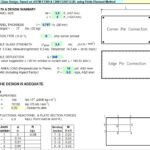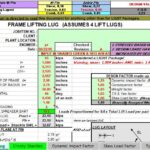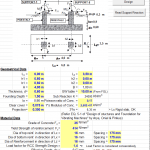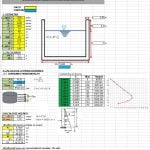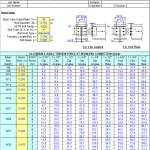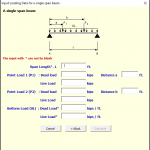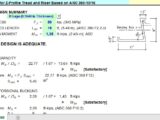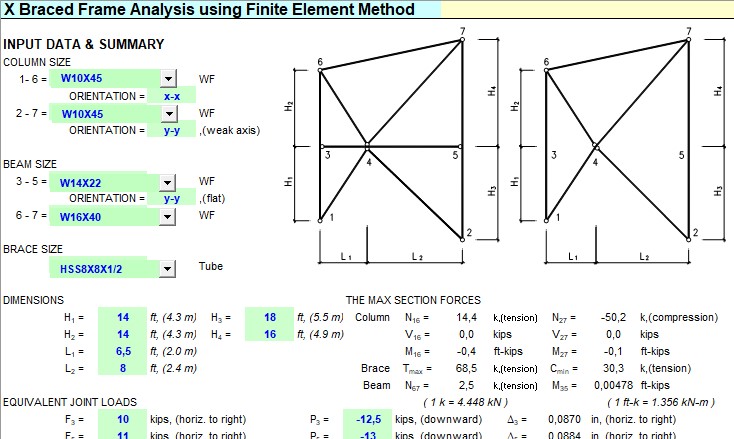
X Braced Frame Analysis Using Finite Element Method Spreadsheet
12 February 2023X Braced Frame Analysis Using Finite Element Method Spreadsheet
When it comes to structural engineering, the X-braced frame is a standout system for ensuring strength, stability, and efficiency. Known for its resilience and cost-effectiveness, this framing system is widely used in buildings to resist lateral forces like wind and seismic loads. In this article, we’ll explore what an X-braced frame is, its benefits, and why it’s an integral part of modern construction.
What is an X-Braced Frame?
An X-braced frame is a structural system that uses diagonal steel or reinforced members arranged in an “X” shape within the frame. These braces work together to resist lateral loads by transferring forces to the foundations of a building. The system is typically used in steel and concrete structures, where lateral stability is crucial.
How Does an X-Braced Frame Work?
X-braced frames work by creating a truss-like structure within the building’s frame. When lateral forces, such as wind or seismic activity, act on the building, the braces counteract these forces through tension and compression. This mechanism minimizes building deformation and ensures safety and durability.
Key Benefits of X-Braced Frames
- Exceptional Lateral Strength
- X-braced frames are highly effective in resisting lateral forces, making them ideal for areas prone to strong winds or earthquakes.
- Cost-Effectiveness
- Compared to other structural systems, X-braced frames use fewer materials, reducing construction costs while maintaining high performance.
- Design Versatility
- The system can be easily incorporated into various architectural designs without compromising aesthetics or functionality.
- Efficient Load Distribution
- By distributing forces evenly throughout the structure, X-braced frames reduce stress concentrations and increase overall building stability.
- Ease of Construction
- X-braced frames are relatively straightforward to assemble, speeding up construction timelines and reducing labor costs.
Applications of X-Braced Frames
X-braced frames are widely used in:
- Skyscrapers: To counteract wind forces and enhance structural stability.
- Industrial Buildings: For their ability to handle heavy machinery vibrations.
- Bridges: As part of truss systems to resist dynamic loads.
- Seismic Zones: To protect buildings from earthquake-induced forces.
Design Considerations for X-Braced Frames
When designing an X-braced frame, engineers must consider:
- Material Selection: Steel and reinforced concrete are commonly used for their strength and ductility.
- Connection Details: Proper connections ensure that forces are effectively transferred across the structure.
- Load Paths: Analyzing how forces travel through the frame is critical for efficient design.
- Building Codes: Designs must comply with local codes and standards for safety and performance.
X-Braced Frames and Sustainability
In the age of sustainable construction, X-braced frames offer advantages such as reduced material usage and the ability to incorporate recycled steel. These factors make them an eco-friendly choice for modern structures.
Conclusion
The X-braced frame is a proven solution for creating strong, stable, and cost-effective structures. Its ability to resist lateral forces makes it an indispensable system for buildings and bridges, particularly in challenging environments. Whether you’re designing a high-rise or an industrial facility, the X-braced frame stands out as a reliable choice in structural engineering.

